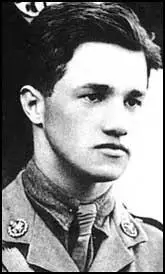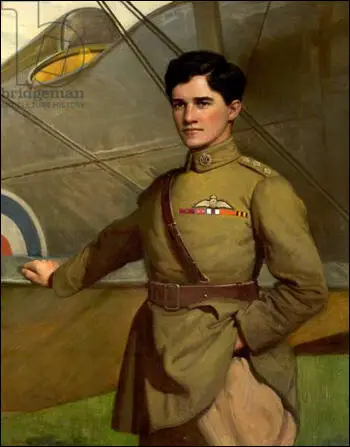Albert Ball

Albert Ball was born in Nottingham on 14th August 1896. An engineering student when the First World War started, he joined the Sherwood Foresters before transferring to the Royal Flying Corps in 1915. Considered an only average pilot, he began his fighting career in May 1916. At first he concentrated on ambushing poorly defended two-seater German planes.
With his confidence growing, Ball began to make single-handed attacks on German planes flying in formation. His preferred position was a few yards directly beneath his opponent who he would shoot by tilting up his single wing-mounted Lewis gun. Flying a Nieuport 17, Ball supported the offensive at the Somme. By the time he was sent back to England in October 1916, Ball was credited with thirty victories.
Appointed flight commander in No. 56 Squadron, Ball began flying the recently developed S.E.5. On the morning of 6th May 1917, Ball brought down a Albatros D-II. Later that evening he was seen in combat with a German single-seater. The pair crashed in deep cloud and Ball's body was later found in the wreckage. By the time of his death, Ball, who was only twenty years old, had won the Victoria Cross, the Military Cross and the Croix de Guerre.

Primary Sources
(1) London Gazette (May, 1917)
From 26 April to 6 May 1917 flying over France, Captain Ball took part in 26 combats in the course of which he destroyed 11 hostile aircraft, brought down two out of control and forced several others to land. Flying alone, on one occasion he fought six hostile machines, twice he fought five and once four. When leading two other British planes he attacked an enemy formation of eight - on each of these occasions he brought down at least one enemy plane, and several times his plane was badly damaged. On returning with a damaged plane he had always to be restrained from immediately going out in another.

